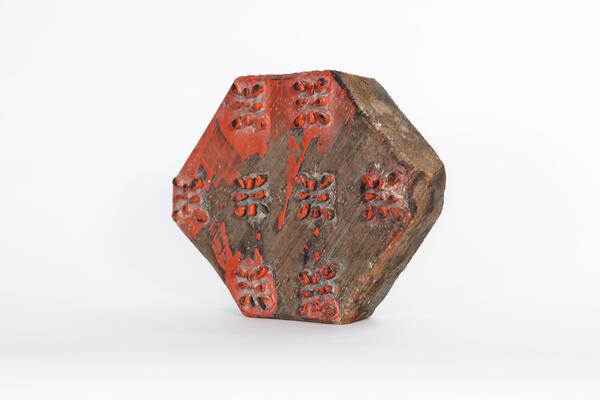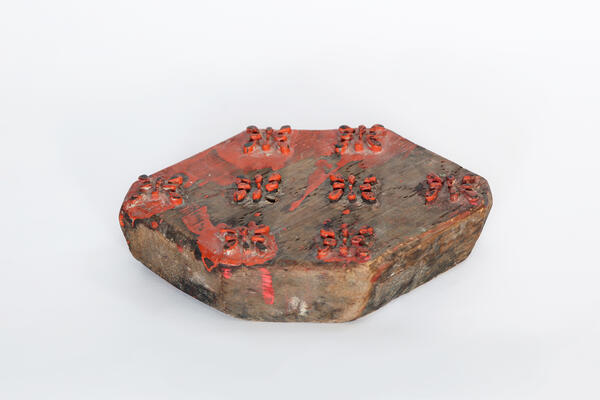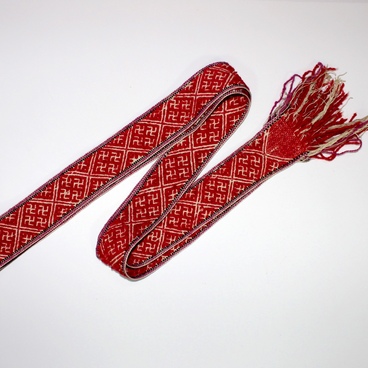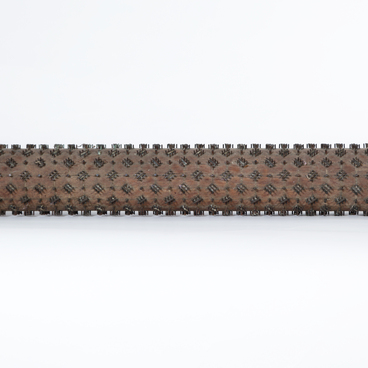A woodblock for textile printing, or the so-called manera, is an element of one of the most ancient types of decorative and applied art. In Russia, woodblock printing for decorating fabrics has been known since the 10th century. Today this method has almost been replaced by industrial printing. The board with octofoils from the collection of the Komi-Permyak Museum was used to decorate fabrics for sarafans, towels, and tablecloths. It was handed over to the museum by its founder, the artist Pyotr Ivanovich Subbotin-Permyak. In total, the collection of the museum has 200 woodblocks for textile printing.
Subbotin-Permyak was the first to study dyeing craft and fabric decorating technologies in the Permyak region. He was the youngest of the nine children in a peasant family, living in the village of Kudymkar. Peter Ivanovich lived only 36 years, but made a great contribution to the education, development and study of the Perm Governorate. Peter Ivanovich worked as a teacher in Moscow, but, visiting his homeland, he spent all his free time collecting material related, as he wrote, “to the decorative patterns of the Permyak region, ” which are diverse in local handicrafts.
The material Subbotin-Permyak studied, processed, and described is collected in six albums, which are now kept in the museum. They contain more than 570 unique samples of embroidery, and the accompanying text describes the special features of textile printing in the Permiak region, and provides comments to the drawings. They encode the Ural nature, fauna and flora, pagan mythology, wood carvings of home decorations, Komi folk legends and fairytales.
Geometric and plant motifs are the most popular ones for Permyak culture; astral and animal motifs are less common. Flower rosettes, blossoms and leaves on branches, stems with buds are interspersed with fine patterns. A bird, a branch or a whole tree, as well as solar signs are often depicted on the border. In some Permyak printed designs there is a noticeable influence of Russian artisans, and others are inspired by the works of Tatar and Oriental craftsmen. The collection contains a lot of imported Russian woodblocks for textile printing with patterns from Russian towels, kokoshniks, silk half-shawls, kerchiefs and factory fabrics; there are elements of decorative embroidery in the Empire style.
Subbotin-Permyak was the first to study dyeing craft and fabric decorating technologies in the Permyak region. He was the youngest of the nine children in a peasant family, living in the village of Kudymkar. Peter Ivanovich lived only 36 years, but made a great contribution to the education, development and study of the Perm Governorate. Peter Ivanovich worked as a teacher in Moscow, but, visiting his homeland, he spent all his free time collecting material related, as he wrote, “to the decorative patterns of the Permyak region, ” which are diverse in local handicrafts.
The material Subbotin-Permyak studied, processed, and described is collected in six albums, which are now kept in the museum. They contain more than 570 unique samples of embroidery, and the accompanying text describes the special features of textile printing in the Permiak region, and provides comments to the drawings. They encode the Ural nature, fauna and flora, pagan mythology, wood carvings of home decorations, Komi folk legends and fairytales.
Geometric and plant motifs are the most popular ones for Permyak culture; astral and animal motifs are less common. Flower rosettes, blossoms and leaves on branches, stems with buds are interspersed with fine patterns. A bird, a branch or a whole tree, as well as solar signs are often depicted on the border. In some Permyak printed designs there is a noticeable influence of Russian artisans, and others are inspired by the works of Tatar and Oriental craftsmen. The collection contains a lot of imported Russian woodblocks for textile printing with patterns from Russian towels, kokoshniks, silk half-shawls, kerchiefs and factory fabrics; there are elements of decorative embroidery in the Empire style.






